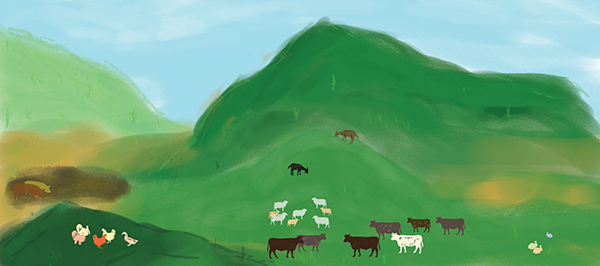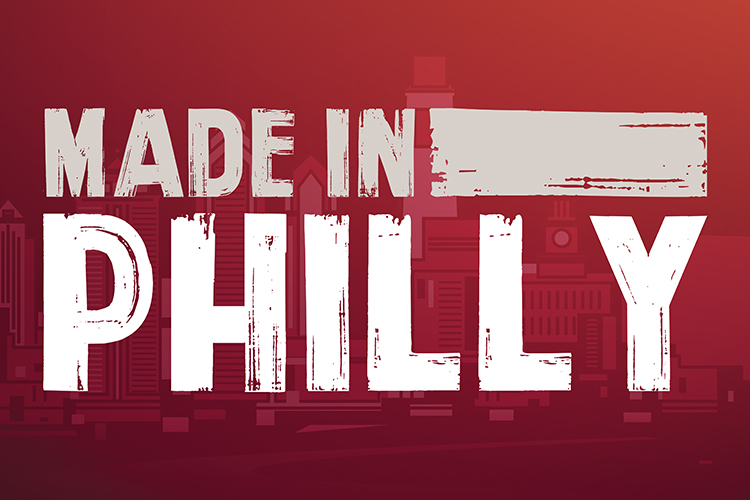Illustration by Marika Mirren
Farm Facts
by Bryan Mayer
A vegan, a vegetarian and an omnivore walked into a bar… and… nothing happened—except maybe they enjoyed a cider together. At least that’s the way it should be. All of us want clean water, healthy food and a thriving ecosystem in which those things can exist.
I believe that consuming meat can be part of that thriving ecosystem, if we ditch our (inhumane, fossil-fuel-consuming, soil-contaminating, water-polluting… I could go on and on) industrial system for a restorative and regenerative pasture-based system.
Condemning the raising and consumption of all livestock is akin to condemning the entire energy industry for polluting. We know that there are forms of energy production that are better than others. Raising livestock (which is a form of energy production) can be regenerative and restorative, as well.
Water and greenhouse gases (GHG) are usually what opponents set their sights on, so let’s start with the gases.
Properly managed pastures can remove excess amounts of these compounds from the atmosphere. Studies from both Texas A&M University and South Dakota State University show how this practice can result in a net-neutral and in some cases a negative GHG footprint, essentially acting as a form of carbon sequestration and methane oxidation.
Water usage is a common criticism leveled at meat producers. I’m sure you’ve heard comparisons about how much water it takes to produce a pound of meat to a pound of vegetable matter. Unfortunately what’s missing from this argument is that there are different ways of measuring water.
Most studies focus on “blue water,” water in freshwater lakes, rivers and aquifers. However, 65 percent of water that falls as rain becomes “green water,” or water that is stored in the soil.
Judith D. Schwartz, in her book “Cows Save the Planet,” shows how animals raised on pasture are uniquely able to benefit from green water, reducing and possibly eliminating the need for blue water usage. In addition, their presence on the land ensures healthy soil that is able to capture this water: Livestock and soil exist in a symbiotic relationship.
But I think one of the most important—and overlooked—facts about meat production is that not all land is suitable for crop production. Some land, especially in arid or mountainous areas, is only usable as pasture, where cattle and other herbivores do not have to compete with vegetables for space.
But our industrial farming system is well entrenched, and transforming the way we raise and slaughter animals is a big task. So how do we get there?
Civil Eats asked this past October, “Can craft butcher shops help transform the meat industry?” Well, the answer is, we already have. Whether you’re a millennial, Gen Xer or boomer you’re shopping more at local butcher shops/specialty markets and farmers markets for domestically raised, pasture-raised meat that’s antibiotic free.
All of us are also eating a larger variety of meat—including more lamb, pork and goat—which helps to break up our monoculture-based system; our entire food system works best when we have a diverse diet, both animal and vegetable.
Even better is that we’re creating a sustainable system because we’re purchasing more value-added products from these shops. Value-added products such as bacon, deli meats, stock, etc., are a whole animal butcher shop’s key to success, and nothing can replace the local butcher shop in a community when it comes to giving customers good information about how to cook unfamiliar cuts. Your local butcher shop is a proxy for the farmer.
But our work is far from over. We’ll have to continue to address the issues of affordability, accessibility and approachability. These are complex issues, but if we continue to look at the facts and make better decisions, we’ll get there.
Bryan Mayer is director of butchery education at Fleishers Craft Butchery in New York. He currently resides in Philadelphia.





